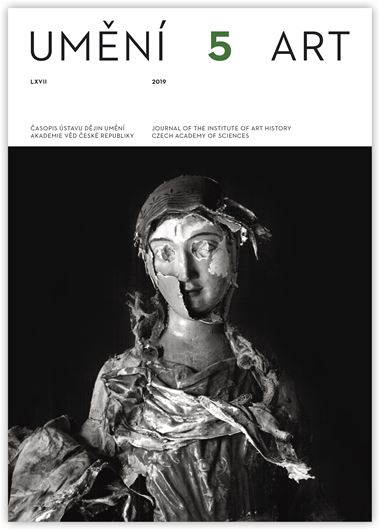Filip Srovnal
Der Triumphbogen für den kommenden Herrscher.Zur Ikonographie, Symbolik und Bedeutung der Skulpturendekoration der Nürnberger Frauenkirche
Unlike studies that base their interpretation of a work on the representational and power strategies of a sovereign or ruler, this article focuses on a structure’s liturgical function. It nevertheless begins by outlining the structural history of the Frauenkirche and its builder. An analysis of written sources, the building, and the iconography of its decorations reveals that research has to date overestimated the emperor’s role. This is in no way inconsistent with the fact that the structure’s architectural layout and the function of its individual elements point to a long tradition of imperial representation. This is especially true of the entrance hall, which, when considered in connection with the emperor’s coronation tour in 1355, can be regarded as a unique medieval citation of a Classical triumphal arch. These symbolic elements are consistent with the kind of representational strategies that were employed by imperial cities, which were naturally focused on the person of the emperor. The chapel can be interpreted as a project that reflects both Charles IV’s interest in Nuremberg and the political and cultural identity of the city’s patriciate. This study also examines the chapel’s decorations from the perspective of their function in the sacred space and concludes that the church represents a textbook example of decorations being determined by liturgical rules. However, it also has an original and multi-layered, theologically conceived iconographic programme. Its central theme is the arrival of Christ and it operates on two levels: first, the figures of the first human couple, the Israeli kings, and patriarchs and prophets on the outer portal and the allusion to Christ’s origin, with the figures of Joachim and Anna and Mary and Joseph, combined with the representation of the story of his birth on the inner portal serve to situate the Advent of Christ within the history of salvation. Second, the relief depicting the Sacrifice in the Temple makes it possible to form a direct link between the image and a ritual act. At the centre of this liturgy is Christ’s arrival in the temple. The symbolic advent of Christ, the Eternal Sovereign, could thus in the eyes of townspeople act as a reference to the ceremonial arrivals of Holy Roman King and, from 1355, Emperor Charles IV. And the same associa- tion could also then certainly work in reverse.
Filip Srovnal: filipsrovnal@gmail.com
Full-text in the Digital Library of the Czech Academy of Sciences:
https://kramerius.lib.cas.cz/uuid/uuid:03ee8c2a-d8ba-4e76-9b49-43ae5bbf5e03
< back

